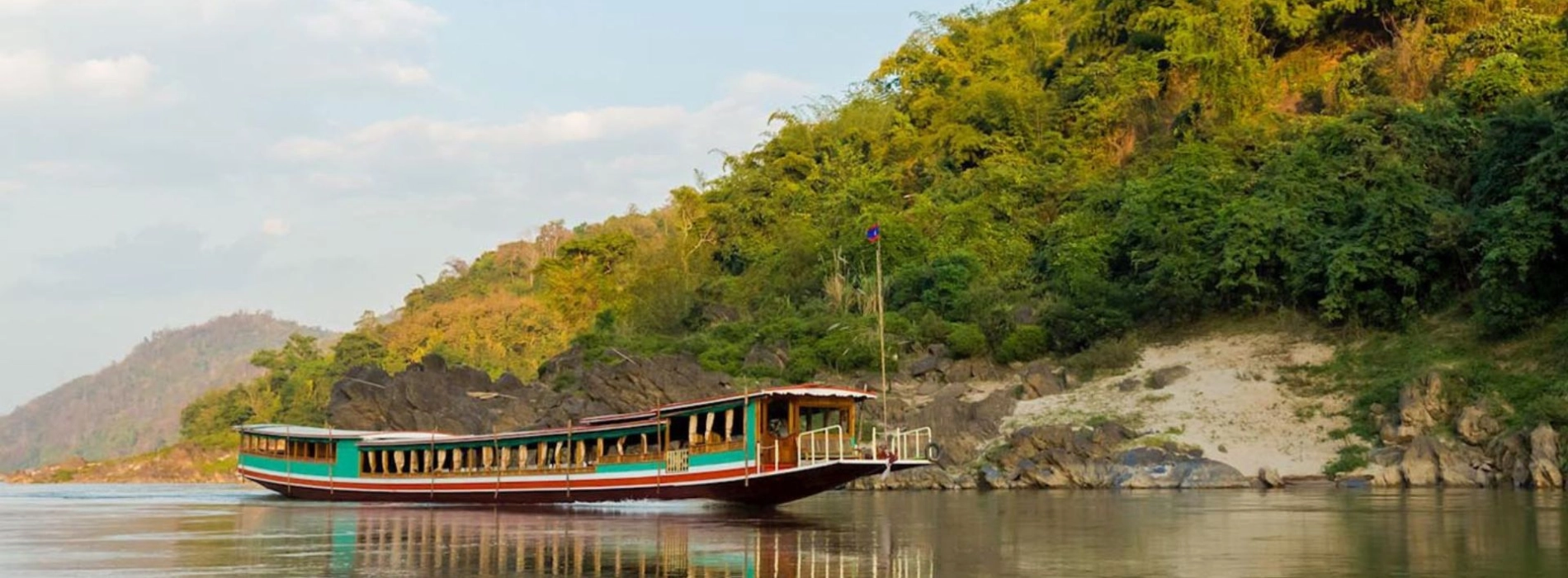
Laos ecotourism is emerging as the most rewarding and responsible travel experience in the region. For green tourists who are ready to immerse themselves in virgin nature, authentic cultures, and reduce the impact on nature, Laos is still the hidden gem.
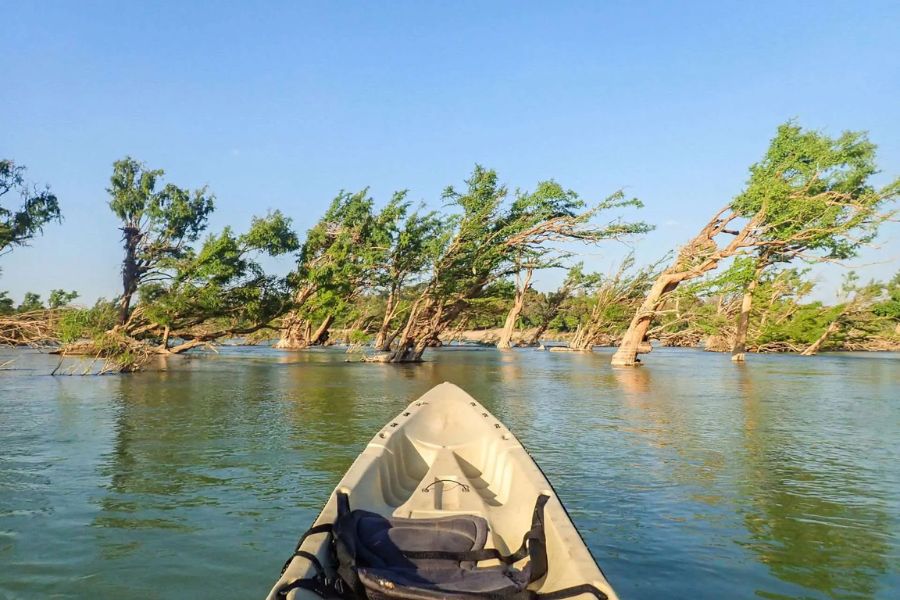
Laos ecotourism (Source: ockpoptok)
Ecotourism is a form of travel that aims to conserve the environment, be respectful of the culture, and benefit the local people. Unlike mass tourism, ecotourism encourages travelers to interact with nature in a responsible way that supports the conservation of the environment and the well being of the locals. It's not merely sightseeing. It's sustainable interaction, learning, and more.
In Laos, ecotourism gets you off the tourist trail. It delivers jungle treks led by local guides, village homestays, wildlife encounters, and conservation tourism that benefits the communities you travel through. With more than 70% forest cover, diverse ethnic cultures, and rich biodiversity, Laos is perfectly placed for this form of ethical exploration.
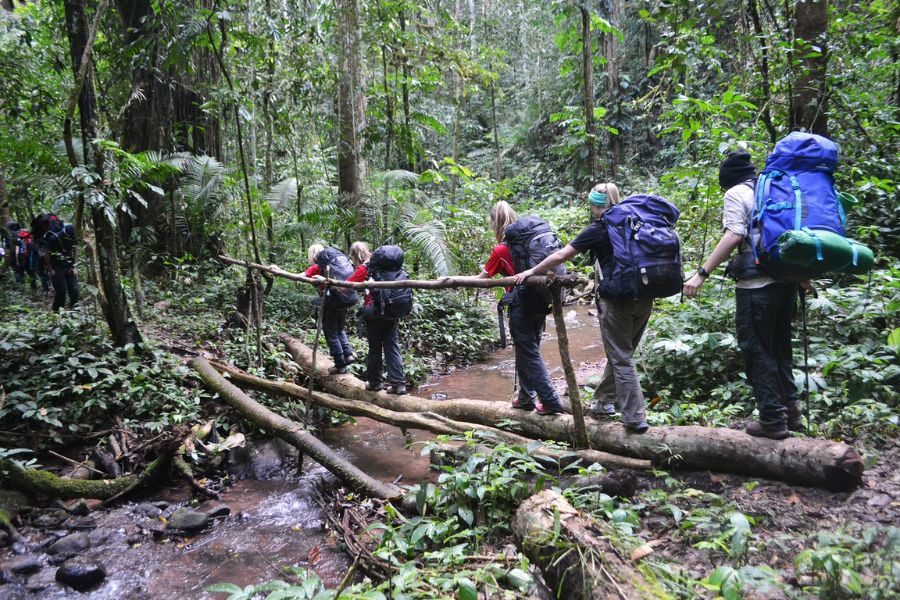
Trekking in Laos (Source: phouiu)
Laos ecotourism is advantageous to the tourists, local communities, and the environment in numerous ways. The most important advantage is that it safeguards the environment. By promoting low impact travel and conservation, ecotourism helps ensure forests, wildlife preserves, and diversity are conserved. Instead of advocating for mass tourism that leads to the destruction of ecosystems, it focuses on sustainable practices such as guided hikes, waste reduction, and eco lodges using renewable resources.
Economically, ecotourism directly benefits local livelihoods. In contrast to mainstream tourism where the revenues fall into foreign investors' pockets, ecotourism keeps money in the community. The visitors' expenditure benefits local guides, homestay families, artisans, and farmers, thus helping to alleviate rural poverty.
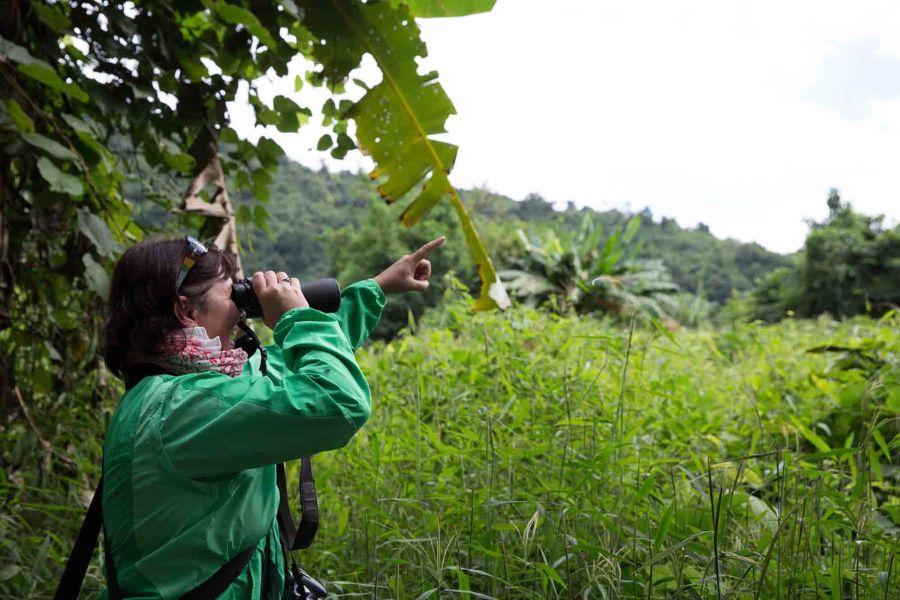
Ecotourism helps ensure forests, wildlife preserves (Source: DiscoverLaos)
It also fosters skills development and entrepreneurship. Culturally, ecotourism encourages respectful and meaningful engagement. Foreign visitors engage in local customs, enjoy home cooked meals, and learn from indigenous cultures. This helps to conserve cultural heritage as well as increase mutual understanding. For travelers, ecotourism offers deeper, more engaging experiences.
Not just observers, they are an active part of the process of learning about nature, participating in village life, and gaining a deeper appreciation of where they go. Ecotourism is finally a dynamic force for accountable travel. It conserves what matters, makes communities stronger, and gives tourists unforgettable experiences that have lasting results.
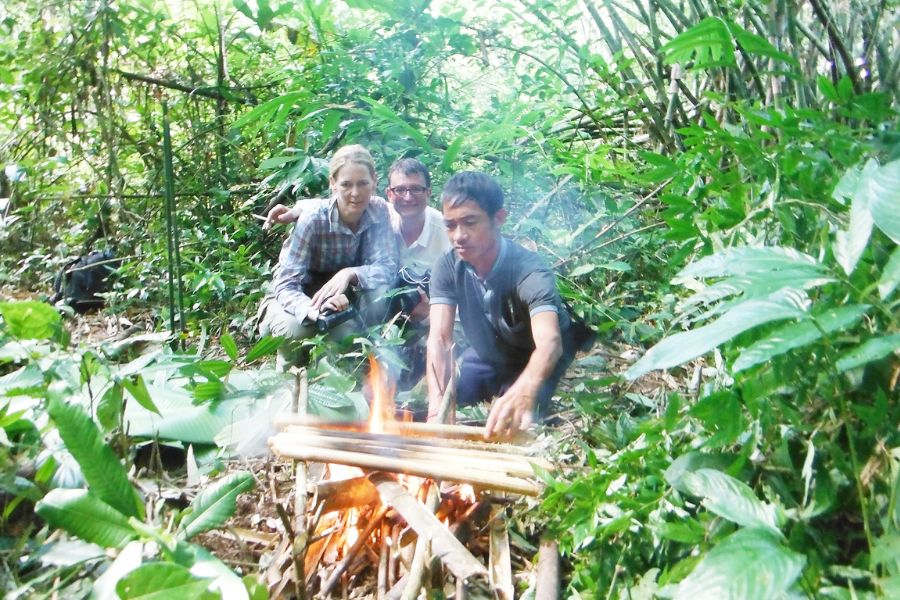
Cooking experience with locals (Source: phouiu)
Nam Ha National Protected Area, which covers Luang Namtha province, is the soul of Laos ecotourism. This huge forest area boasts rare wildlife, isolated ethnic villages, and tropical jungle that appears unspoiled by time. Guided treks here range from one day hikes to multi day adventures. Local guides, often from ethnic minority groups like the Khmu or Akha, lead the way through dense forest paths, across rivers, and into villages where guests can experience traditional life firsthand.
You’ll sleep in bamboo huts, eat meals cooked over open fires, and witness life far removed from the modern world. These treks are not only interesting, they're based on sustainable travel in Laos. The entrance fees go towards conservation initiatives, trail repair, and community employment. Tourists are encouraged to reduce, reuse, and recycle, respect local traditions, and leave no trace.
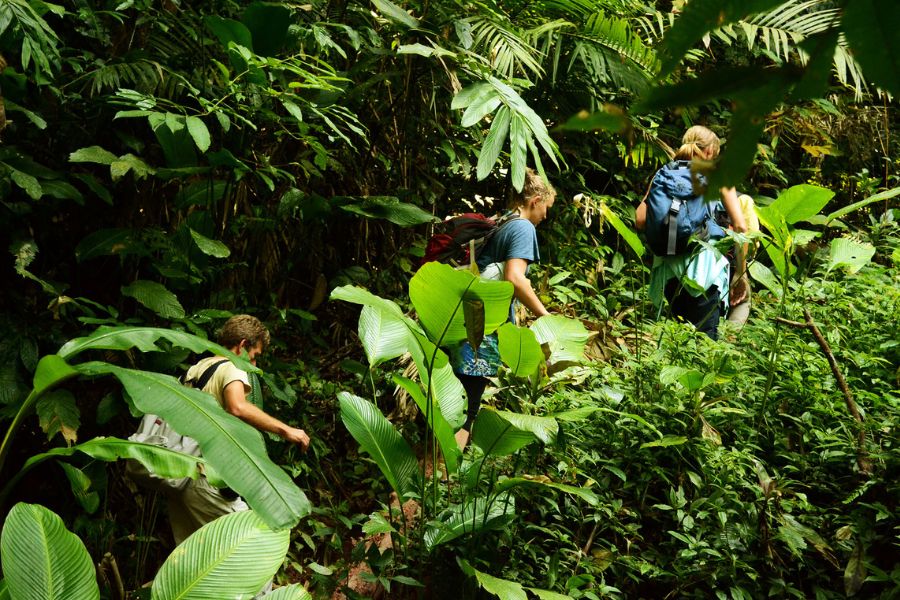
Trekking in Nam Ha National Protected Area (Source: luangnamthatrek)
Wildlife is a plus too. You can catch sightings of macaques, hornbills, or even clouded leopard tracks. For anyone seeking off grid adventure with an upbeat twist, Nam Ha is a must.
One of the most popular eco adventures in Laos is the Gibbon Experience in northern Laos. In the Bokeo Nature Reserve, the experience consists of ziplining over the jungle canopy, sleeping in treehouses, and perhaps even seeing the rare black crested gibbon in its natural environment. The treehouses for the zipline only suspend far in the treetop canopy. They are unadorned but unforgettable.
Imagine waking up to sunrise above treetops, hearing the otherworldly calls of gibbons through the mist. The project is more than a roller coaster ride. It was established to protect the Bokeo forest from poaching and illegal logging, with the earnings going towards conservation and local communities. It's the best model of responsible tourism in Southeast Asia. The Gibbon Experience offers short (2-day) and longer (3-day) options.
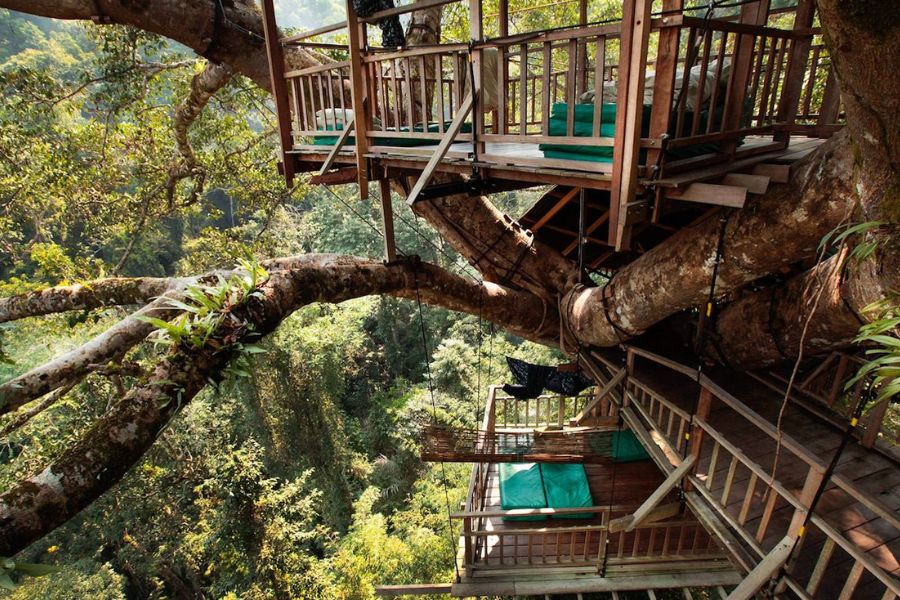
Gibbon Experience in Bokeo Nature Reserve (Source: CNN)
Guides are well trained in forest conservation and safety, and there are strict eco rules to help maintain the habitat. This experience is for nature lovers, thrill-seekers, and anyone looking for an unforgettable experience with Laos' wild side done responsibly.
In northern Laos, Kong Lor Cave offers an action packed mix of river kayaking, cave discovery, and village atmosphere. The cave itself measures more than 7 kilometers in length inside a limestone mountain and is navigable by boat, a surreal, out of this world experience. Paddle through the darkness, guided by locals who know every twist and turn of the cave. Inside, dramatic stalactites hang like chandeliers and subterranean chambers echo with stillness.
At the other end, you’ll emerge into a remote valley, where traditional villages like Natane offer overnight stays. Kong Lor is the quintessential example of sustainable travel in Laos. The local communities manage the boat tours, there are locally managed eco lodges, and handicrafts are marketed to tourists. It preserves the sensitive cave ecosystem while providing livelihood for families within the region.
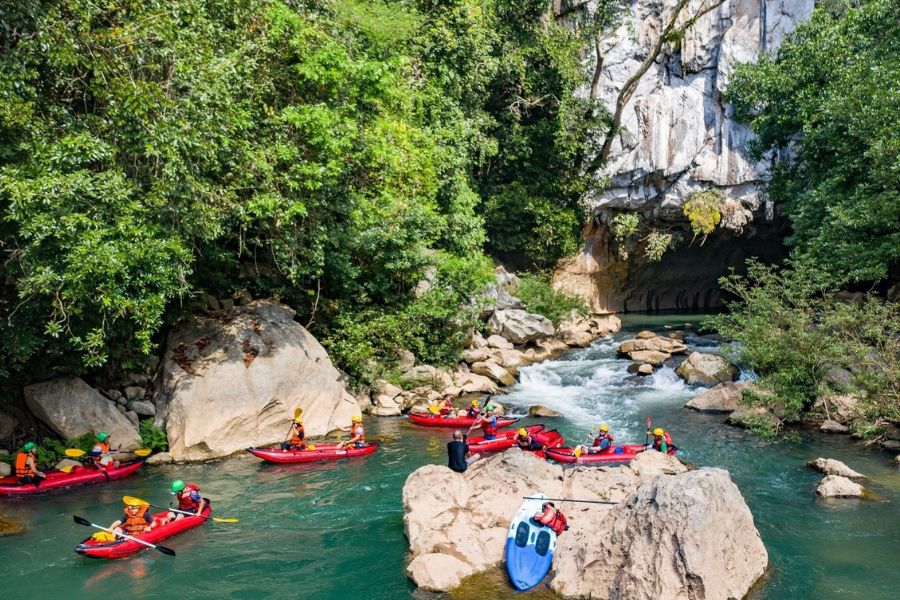
Kayaking and Caving in Kong Lor Cave (Source: GreenDiscoveryLaos)
Beyond the cave is the Hinboun Valley filled with rural scenery perfect for cycling, swimming, or simply hanging out by the river. For thrill lovers who also want to see some culture, Kong Lor is the ideal destination on any Laos trip.
The Bolaven Plateau in southern Laos offers one of the country's best cycling routes ideal for eco-friendly travelers who want to take it slow and appreciate the scenery. This mountain region is renowned for its temperate weather, coffee plantations, waterfalls, and minority ethnic communities. Its road cover varies from tarmac to rural earth tracks but one thing that is constant is the level of low impact discovery.
Cyclists have the opportunity to visit small organic coffee farms, meet Katu or Alak villagers with time honored traditions, and rest in marvelous waterfalls like Tad Fane or Tad Lo. The experience is both invigorating and rich in culture. The local tour operators generally have cycling tours that include homestays, home cooked meals, and multilingual guides.
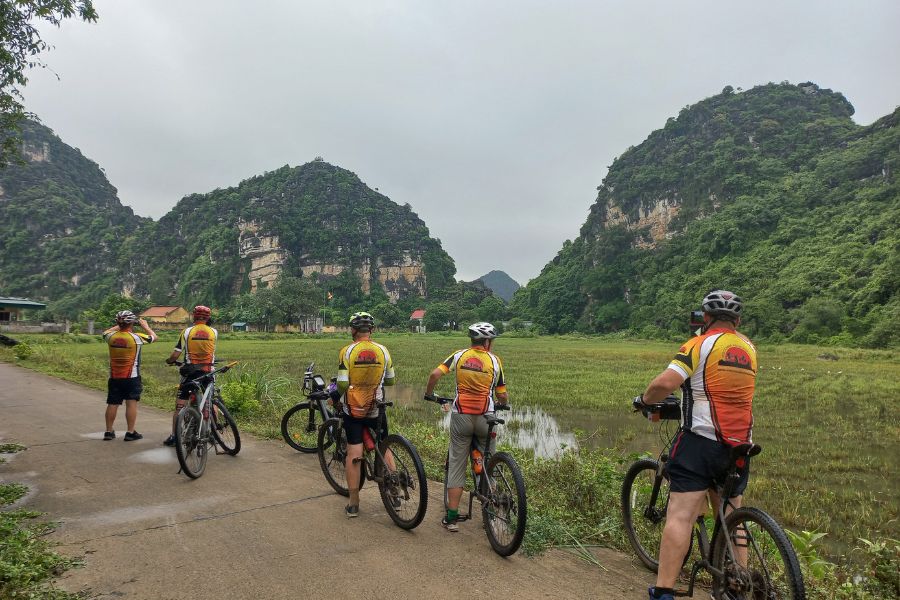
Experience Cycling the Bolaven Plateau (Source: LaosCyclingTour)
The tours aim to cut carbon emissions, improve cultural sensitivity, and have the income equally distributed. Bolaven is for those who want to marry fitness, nature, and culture in a socially responsible holiday adventure that serves the communities and environment of the region.
Read more: Nong Khiaw Tour 3 Days: Explore the Scenic Landscape
The Nam Ou River, which flows through the north of Laos, is a lifeline of existence and culture. One of the most peaceful ways to experience Laos ecotourism is to take an eco-friendly river journey by kayak or longboat here. The Nam Ou winds through karst peaks, thick jungle, and traditional villages for which life revolves around the water. Kayaking trips often stop at fishing villages, caves, and countryside temples.
Homestays in river villages allow you to witness Lao culture up close, far removed from mass tourism. Nam Ou ecotours are typically run by locals with a sustainability focus. They are plastic-free, small-scale in terms of transportation, and include education on river conservation. Visitors learn how river ecosystems are being affected by climate change and damming and how tourism can be harnessed as a tool for advocacy and conservation.
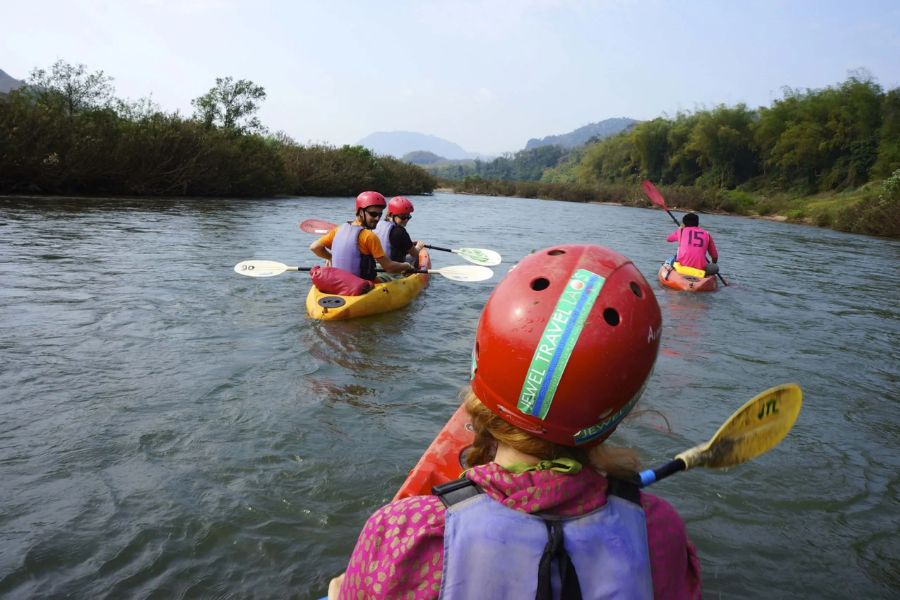
River Life on the Nam Ou (Source: ethnictravellaos)
For visitors who seek tranquility, scenery, and a slower pace, the Nam Ou offers a chance to see Laos from the river and leave only waves behind.
Nong Khiaw, a riverside village in northern Laos, is one of the world's new stars of Laos ecotourism. Hugged by limestone cliffs and thick jungle, this peaceful town offers access to treks, caves, waterfalls, and actual village life. The locals have embraced sustainable tourism as a way of protecting their environment and supporting local livelihoods. Trekking trails lead to remote villages like Ban Nalan, where overnight accommodations, farm hands assistance, and tours on traditional weaving or cooking can be obtained.
Nong Khiaw's secret to success is that it balances things out, tourism remains local, small scale, and respectful. Treks are typically operated through cooperatives that redistribute profits back to the communities. Waste disposal and environmental education are part of the program as well. Travelers here are not spectators, they're participants. Whether hiking to the viewpoint at Phadeng or helping with a reforestation project, you’re contributing to something lasting.
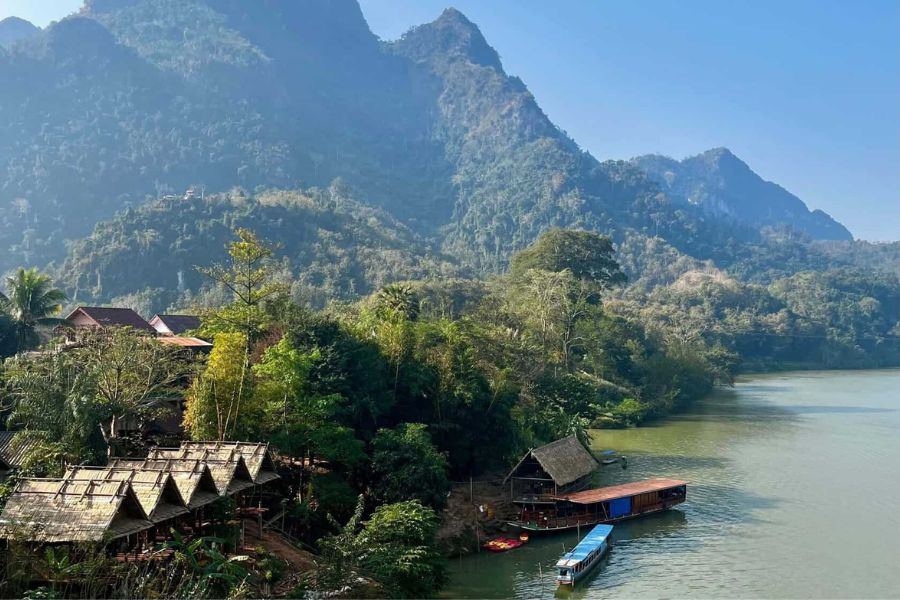
Amazing scenery at Nong Khiaw (Source: thelavendertravelers)
For anyone interested in responsible tourism in Laos, Nong Khiaw is a shining example of how tourism can be good for people and the earth.
Laos ecotourism offers you more than appreciable vistas, it's a means of making your travel meaningful. From jungle to river, village to cave, every single eco experience in Laos offers you an intimate bond with nature and man. But all journeys are not created equal. How you choose yours matters and Asia King Travel is your trusted partner in responsible travel in Laos and Southeast Asia.
Read more: Laos Trekking Tour 10 Days: Paradise for Adventurer